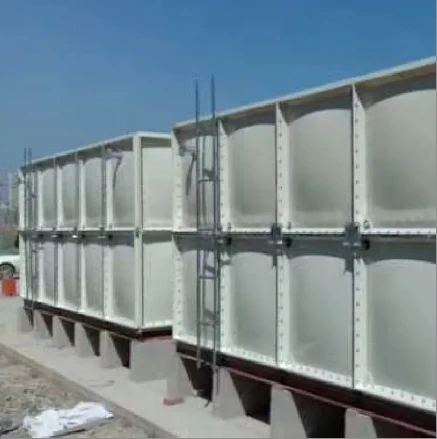loading...
- No. 9, Xingyuan South Street, Dongwaihuan Road, Zaoqiang County, Hengshui, Hebei, China
- admin@zjcomposites.com
- +86 15097380338
- Welcome to visit our website!
Design and Efficiency of Sectional Water Storage Tanks for Modern Infrastructure
Sectional Water Storage Tanks A Comprehensive Overview
Water storage is an essential aspect of modern infrastructure, supporting everything from residential needs to large industrial applications. Among various solutions available in the market, sectional water storage tanks stand out due to their versatility, efficiency, and ease of installation. This article delves into what sectional water storage tanks are, their benefits, types, installation, maintenance, and applications.
What are Sectional Water Storage Tanks?
Sectional water storage tanks are prefabricated tanks composed of multiple sections. These sections are typically made from materials such as stainless steel, fiberglass, or reinforced concrete and can be assembled on-site. The modular nature of these tanks allows for various configurations, making them suitable for storing water in diverse settings and quantities.
Benefits of Sectional Water Storage Tanks
1. Customization One of the primary advantages of sectional water tanks is their ability to be customized. They can be tailored to fit specific requirements concerning size, capacity, and configuration, allowing installations in constrained spaces without compromising functionality.
2. Ease of Transport and Installation Since sectional tanks are delivered in parts, transportation is simpler and cost-effective. Their modular design contributes to quicker assembly, making installation faster compared to traditional tank options.
3. Durability Depending on the materials utilized, sectional tanks can withstand harsh weather conditions and resist corrosion and UV damage. Stainless steel tanks, for example, are known for their strength and longevity.
4. Scalability As needs grow, sectional tanks can be expanded simply by adding more sections. This feature makes them an excellent choice for businesses anticipating future growth or changes in water demand.
5. Cost-Effectiveness The combination of reduced transportation costs, efficient installation, and long-term durability makes sectional water storage tanks a financially viable option over the long run.
Types of Sectional Water Storage Tanks
- Steel Tanks Often galvanized or stainless steel, these tanks combine strength with resistance to corrosion. They are commonly used in both commercial and industrial applications. - Fiberglass Tanks Lightweight and corrosion-resistant, fiberglass tanks are often employed in situations where chemical resistance is necessary or where weight considerations are paramount. - Concrete Tanks While heavier and oftentimes more permanent, sectional concrete tanks offer excellent durability and thermal insulation properties, making them suitable for large-scale applications.
Installation Process
sectional water storage tank

The installation of sectional water storage tanks typically involves several steps
1. Site Preparation A suitable location with a level surface and adequate drainage must be prepared. Proper site work ensures the longevity and functionality of the tank.
2. Assembly Sections are brought to the site and assembled according to the manufacturer’s specifications. This may involve bolting, welding, or using various fastening techniques, depending on the tank material.
3. Sealing and Testing After assembly, the joints and connections are sealed to prevent leaks. The tank is often tested for structural integrity and water tightness before it becomes operational.
4. Connection to Supply Lines Finally, the tank is connected to the necessary water supply lines, pumps, and distribution systems.
Maintenance Considerations
Maintaining sectional water storage tanks is crucial for ensuring the quality of the stored water and the longevity of the tank itself. Regular inspections should focus on
- Structural Integrity Checking for signs of wear, corrosion, or leaks. - Cleaning Periodic cleaning is essential to prevent sediment buildup, algae growth, and contamination. - Water Quality Testing Regular tests help ensure that the stored water meets health and safety standards.
Applications of Sectional Water Storage Tanks
These versatile tanks are used in various applications, including
- Residential For supplying water to homes, particularly in areas lacking consistent municipal supply. - Agricultural To store water for irrigation and livestock. - Industrial To manage water supply needs in factories, manufacturing plants, and processing facilities. - Emergency Services Used for storing water for fire-fighting systems or as part of disaster response infrastructures.
Conclusion
Sectional water storage tanks present a flexible and efficient solution to contemporary water storage challenges. With a clear understanding of their benefits, types, installation procedures, and maintenance requirements, individuals and organizations can make informed decisions when selecting water storage solutions that meet their specific needs. Whether for residential, agricultural, or industrial purposes, sectional water storage tanks offer reliability and scalability that are hard to beat.
-
The Rise of FRP Profiles: Strong, Lightweight, and Built to LastNewsJul.14,2025
-
SMC Panel Tanks: A Modern Water Storage Solution for All EnvironmentsNewsJul.14,2025
-
GRP Grating: A Modern Solution for Safe and Durable Access SystemsNewsJul.14,2025
-
Galvanized Steel Water Tanks: Durable, Reliable, and Ready for UseNewsJul.14,2025
-
FRP Mini Mesh Grating: The Safer, Smarter Flooring SolutionNewsJul.14,2025
-
Exploring FRP Vessels: Durable Solutions for Modern Fluid HandlingNewsJul.14,2025
-
GRP Structures: The Future of Lightweight, High-Performance EngineeringNewsJun.20,2025
